Kanyakumari
Kanyakumari is one of those places that stays with you long after you leave. There is something truly magical about being in a place at the end of India, looking out across the auspicious spot where three seas mingle. I headed to Kanyakumari in September 2011 from Chennai.
It was a Sunday afternoon when I made my way to Chennai’s Egmore Railway station for my overnight train to Kanyakumari. On the train I got chatting with a man named Manu who was disembarking in Madurai at about 1am. Also in our berth was a man wearing an Indian flag sash and his friend carrying lots of luggage. It turned out that the man wearing the sash was a local political figure in Kanyakumari, and man who was overburdened with his luggage was his assistant. As we sped across the countryside we discussed everything from corruption in India to the best bookshops in Delhi and the intricacies of haggling for an autorickshaw in Chennai. The train stopped at Villupuram, a small village halfway between Chennai and Tiruchirappalli. The politician’s assistant jumped off, scurried up the platform and out of sight; a few minutes later the train began to pull out of the station, and just when we thought the assistant had been left behind, he materialized at the end of the carriage carrying four packets. He had bought upma for all of us, a Villupuram specialty made from semolina, coconut, onion, tomato and mild spices boiled down into a squidgy ball. A flame red sunset lit up the sky outside and the delicious upma was just enough to send me off to sleep…
I had hoped. I hadn’t been sleeping well over last weekend, and I didn’t sleep too well on the train. Eventually, at about 1am, I drifted off and had a broken sleep for the rest of the night. It was one of those nights where every time I checked the clock I thought I hadn’t slept since the last time I checked – although in actual fact I had. On one occasion I stirred and stuck my head out of the berth, and caught sight of a fellow passenger standing at the external door at the end of the carriage, his figure illuminated by gentle dappled light. The carriage was in complete darkness with everyone else still sleeping. It must have been about 3am, and I felt like I had been awake all night. I took a walk down to the door and looked outside and was greeted by a sight which took my breath away. The sky was illuminated hues of hot pink and peach, and before me stood mountains, rising tall out of the dark desert. I raced back to my bed and took my phone out – it was 6am, and I had slept for 5 hours straight. The sun was rising and I was almost in Kanyakumari, India’s southernmost town.
Just out of Kanyakumari the mountains are suddenly replaced by rice paddies, red dirt and dusty windswept lanes. I was almost at the end of India. The exposed conditions in this part of the world make it a prime location for windfarms, and a fellow passenger told me about how the Indian government had contracted an Australian firm to build 99 of them. One hour later the train pulled into Kanyakumari’s small train station at the very end of the line. Once in Kanyakumari, I arrived at my hotel which I dubbed Fawlty Towers. As I walked in, the manager (Basil) was yelling at the receptionist (Manuel), but as soon as he caught sight of me he became all sweetness and light; “Oh hello sir how are you? Do you have a reservation? How can I help you? Have you had breakfast?” I checked in and Manuel took my details. Basil yelled at him for taking too long, then turned to me, smiled and enthused “I’m sorry, he’s not from here” before turning back to Manuel for another round of abuse. I had booked and paid online and neither Basil nor Manuel could work out where in the system my reservation was. “Internet booking? We have? We have! Thank you sir you are a very good guest!” He then slapped Manuel on the back of the head. I know it’s wrong, but I was finding it hard not to laugh – I was about to ask if my room was ‘”airy” and see what their response was!
After checking in (many mid-range Indian hotels have 24-hour check-in and check-out) I took a walk down to the seashore. Kanyakumari is a scrappy little town of 19,000 people (all of whom inexplicably seem to carry satchel bags) but has a special geographical and spiritual significance. To begin with, I visited the Gandhi memorial. This (very) pink structure is located at the end of the nation which Gandhi fathered. It is built in a hybrid of Hindu, Muslim and Christian styles to emphasise Gandhi’s message of unity. The memorial itself is not particularly elaborate, and inside there is simply one large marble chamber, empty except for a stone box which was used to store Gandhi’s ashes before they were scattered (elsewhere in India). Above the stone is a small hole in the ceiling; on the 2nd October every year, Gandhi’s birthday, the sun enters the chamber and falls on the stone. The simplicity of the memorial and the frontier atmosphere of the
location make it an evocative place. It was about to become a whole lot more evocative; I left the Gandhi memorial and walked down to the seashore where India looks east, south and west all at once. Here, three bodies of water collide and the treacherous waves only add to the drama. With the Bay of Bengal to the east, the Indian Ocean to the south and the Arabian Sea to the west, pilgrims flock to the most southerly point of the subcontinent to bathe in the sea. I felt like I had reached the end of the earth. If I took a step further, the Maldives might have asked to see my passport. Just 400 metres offshore were two rocky islands, one of which is home to a imposing statue of Thiruvalluvar, a renowned Tamil poet. The statue stands 133 feet tall, symbolic of the 133 chapters of Thiruvalluvar’s epic Thirukural, and thus spectacularly dominates India’s frontier. Dwarfed by the statue is the Vivekananda rock. Here, Swami (monk) Vivekananda is believed to have mediated. As he saw the sun set, the moon rise and three seas mingle, he
decided to spread the word of Hinduism beyond India’s shores. His decision had huge consequences for Indian culture and faith, and eventually gave birth to a whole new religion, Buddhism. And therein lies the appeal in swimming in the water here; pilgrims come in search of spiritual enlightenment, just as Vivekananda experienced. Similarly, life in Kanyakumari chugs along at a spiritually languid pace. I had only been there for a day and it had felt like a week already. That afternoon I walked down to the beachside lookout to watch the sun set over the Arabian Sea. The moon was high in the sky and the wind blustery as the sun sank behind the clouds which then melted into the sea-spray of the pounding waves. The beach was now full of mostly local tourists, including many from the neighbouring state of Kerala.
The next day my alarm went off at 5am. Everyone knows I hate mornings, but this was one worth getting up for (if there is such a thing). I walked down to the point and joined the gathering crowds as the darkness began to lift over the Bay of Bengal. First indigo, then violet, mauve, then peach flooded the sky before the sun broke over the horizon. The seashore was doused in honey-coloured light, and a conch shell was blown to herald the start of a new day over the nation. By now, the shoreline was crowded with pilgrims and tourists, many of them praying, chanting or even meditating. Some families were scattering ashes of loved ones at various points on the headland; one lady was weeping but with a smile on her face as she gradually tipped an urn, allowing the wind to carry the ashes out to sea, before submerging herself fully clothed in the holy waters. Her husband joined her in the water, and gradually the crying subsided and the tears became those of childlike laughter, as the pair were knocked over by the rough waves and started splashing water at each other. It was a very moving experience, and one which I did not photograph out of respect. Kanyakumari is named after a goddess Kumari, who was a kanya (virgin). It is believed that here, she single-handedly fought the devil to make the world free. On the headland stands a temple in honour of Kumari, filled with idols of her and Ganesh, the God of good tidings. To enter the temple, men must remove their shirts as a mark of humility. The temple walls were crumbling stone, and the inner sanctum was dimly lit. Inside stood a large idol of the virgin Kumari, decorated with a garland. Around her sat scores of oval shaped candles with large ridges on them to symbolize… well, I’ll let you figure that one out! I spent the rest of the day at my hotel rooftop with a cool drink, with my back turned to the rest of the nation, looking out to the blue blue sea.
When to go
December and January. It will be hot, but bearable. After January the temperature starts to increase rapidly, and in May and June mercury regularly hits 45 celsius. The monsoon just makes things more humid, it doesn’t really cool down.
Essential Stats
Culture shock: 8/10
Language difficulty: 7/10
Quality of food: 7/10
Cost: 4/10
Physical demand: 6/10
Advice and warnings
The usual precautions apply – no walking alone at night if you can help it, keep a close eye on your valuables, etc. The seas off Kanyakumari are full of very strong currents, and you’d be well advised not to stray too far from the shoreline, even if you’re a strong swimmer. Act with appropriate decorum if you visit the Kumari temple, and yes, all men have to remove their shirts – if you don’t want to, then don’t go. Finally, this coastline was badly affected by the 2004 tsunami. Emotional wounds are still healing, so when speaking with the locals don’t bring up the topic unless they do so first.
Check Smart Traveller or the British Foreign Office for more comprehensive warnings.
Visas
Australians and Pakistanis need a visa to enter India. Applications in Australia cost around A$100, and take about a week to process. Applications from Pakistan are more complicated. Contact your nearest Indian diplomatic mission for details (Melbourne, Islamabad, Sydney).
Getting there and around
From Chennai Egmore, the Kanyakumari Express leaves daily at 5:30pm and arrives at 6:50am the next day. The return trip leaves at 5:20pm and arrives in Chennai at 6:50am the next day. A 2 Tier AC ticket costs INR 1,397 one way.
From Lahore, fly Pakistan International Airlines to Delhi (from PKR 38,030 return), then a separate ticket on Jet Airways from Delhi to Tiruvananthapuram (from PKR 23,312 return). Be sure to leave ample time between flights, as baggage won’t be transferred automatically, and immigration procedures for Pakistani nationals can be lengthy. From Thiruvananthapuram, hire a car or jump in a local bus for the final 80kms south to Kanyakumari.
From Melbourne and Sydney, Jet Airways flies to Tiruvananthapuram in partnership with Qantas via Singapore and Mumbai. From Thiruvananthapuram, hire a car or jump in a local bus for the final 80kms south to Kanyakumari.
Melbourne (from $1231 return)
Sydney (from $1247 return)
Accommodation
I stayed at the 2-star Melody Park Hotel – rooms start from INR 1400/night. Looking at their website, things appear to have been spruced up a bit since I was there. A bit more upmarket are the Sparsa Resort and the Hotel Sea View. Bear in mind that Kanyakumari is a small town and the options aren’t quite of the same standard as in the major cities.

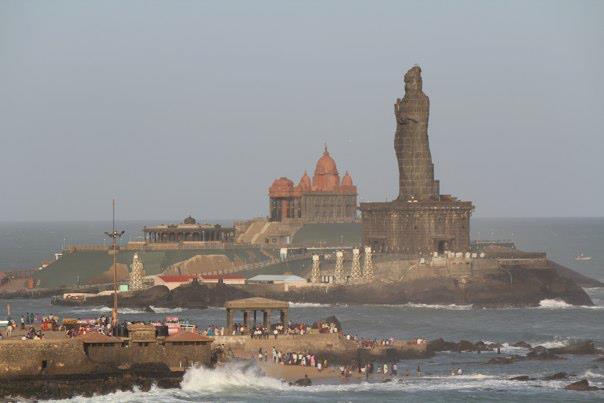
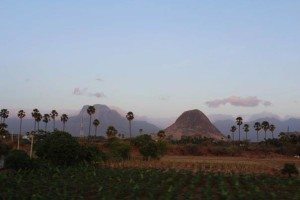
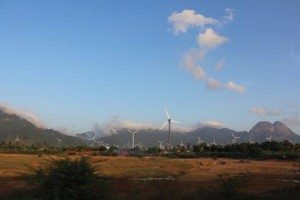
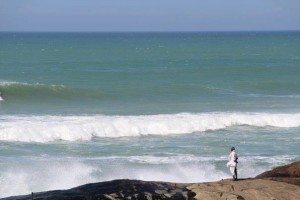
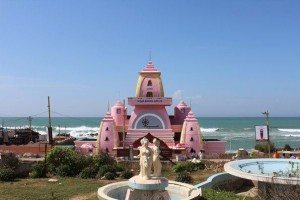
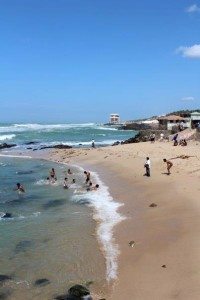
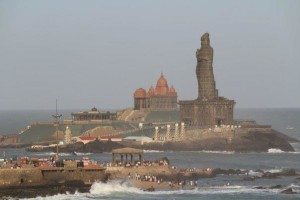
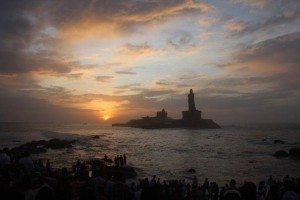
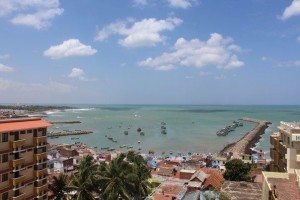
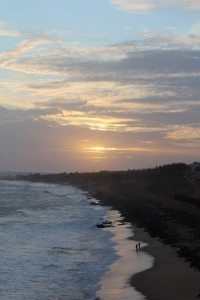



0 Comments